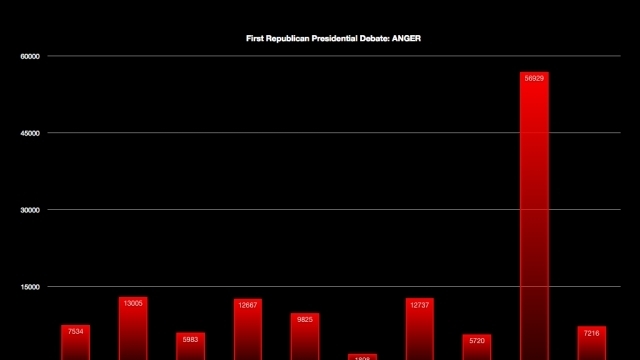Donald Trump towered over rivals in first Republican debate, according to analysis carried out of over 1.4Millon Twitter communications.
‘TheySay’ is a social media sentiment analysis system, created by the University of Oxford which claims that their product is the most advanced computational linguistics software of its kind.
The analytical tool monitors positive and negative sentiment as well as human emotions including humour and sarcasm.
Overall, Trump’s ratings literally dwarfed the other candidates across all categories (volume, positive/negative sentiment, and emotions) in TheySay’s analysis of Thursday night’s Fox News debate in Cleveland, Ohio.
Donald Trump's points on immigration lack evidence? Like that ever stopped Republicans from believing such claims before.#GOPDebate
— MATTY ICE (@FailGOP) August 7, 2015
A TheySay spokesperson said: “Trump was mentioned up to 446 457 in our analysis.
“Trump’s volume was 2.4 times higher than that of Carson’s who generated a respectable amount of Twitter traffic.
“In the Twitter volume war, Trump is unbeaten though.
The top three most positive sentiment ratings were achieved by John Kasich, Marco Rubio, and Jeb Bush, however, the volume levels of all three were much lower than Trump.
Considering volume and positive sentiment, Carson and Bush did very well while Trump did not.
The top three most negative ratings were detected for Huckabee, Trump, and Paul.
Considering volume and negative sentiment, both Trump and Carson performed poorly.
Excluding Trump, anger was expressed prominently around Carson, Paul, and Cruz.
Excluding Trump, fear was in turn expressed prominently around Cruz, Walker, and Bush.
Here’s what the rest of the world thinks of Donald Trump: http://t.co/riYpkbAd4s #GOPDebate pic.twitter.com/nNIiI4TOST
— CNN International (@cnni) August 7, 2015
Excluding Trump, a considerable amount of agitation was expressed in tweets about Cruz, Paul, and Bush.
In absolute terms, Trump generated the most surprise, speculation, and doubt or uncertainty on Twitter as well.
In proportional terms, Carson generated a noticeably high level of surprise, speculation, and doubt/uncertainty.
Cruz and Paul also displayed interestingly high speculation levels while Cruz and and Walker reached high surprise levels.
The uncertainty/doubt levels for Walker and Bush were also relatively high.
